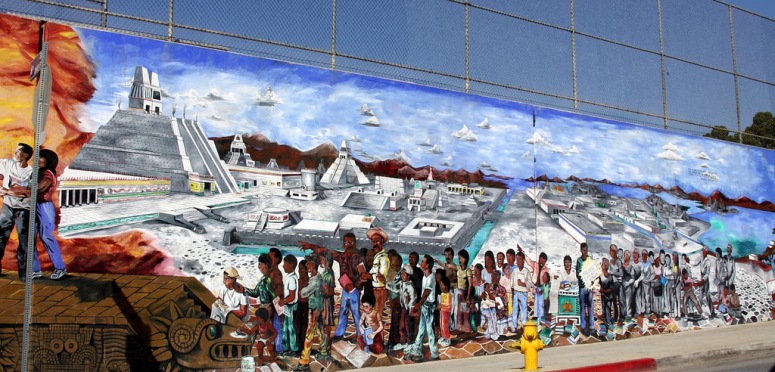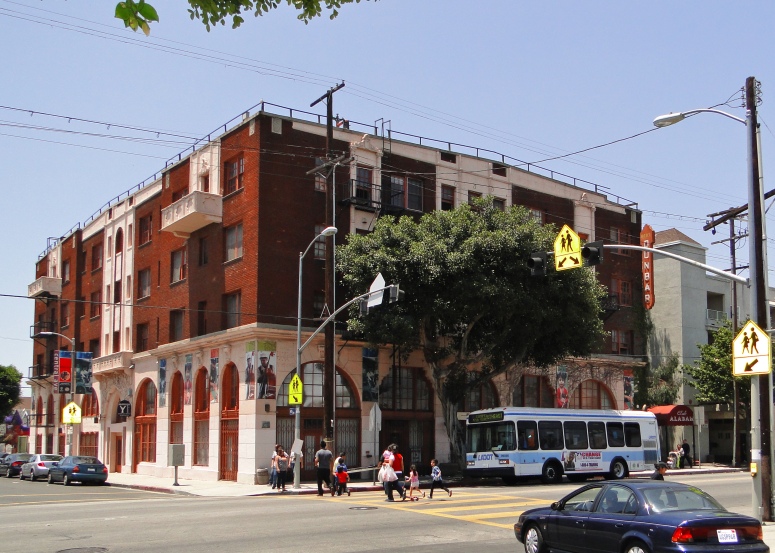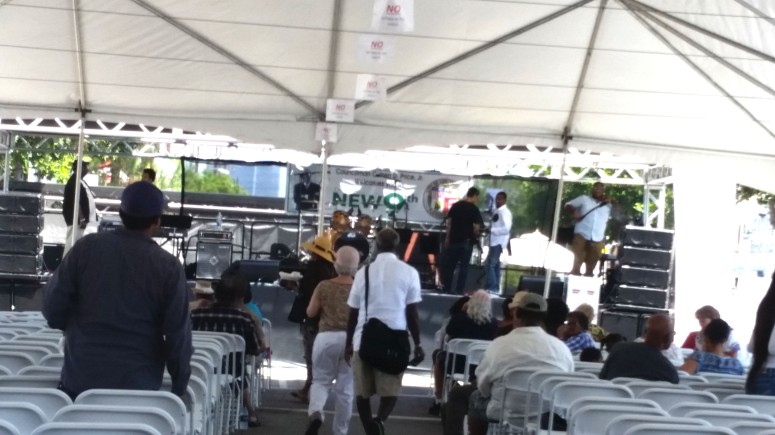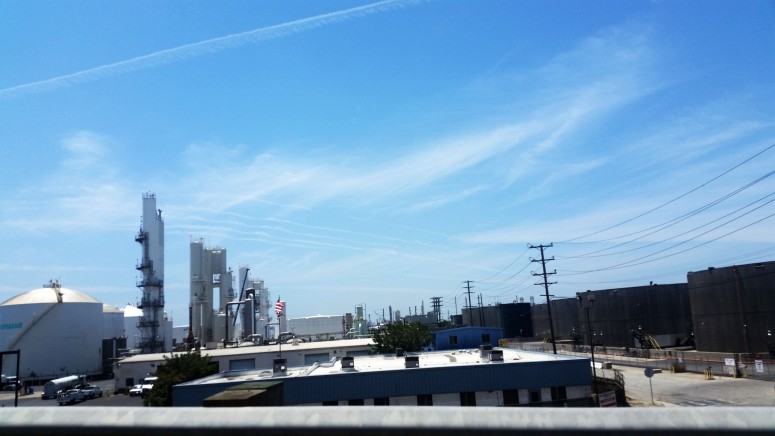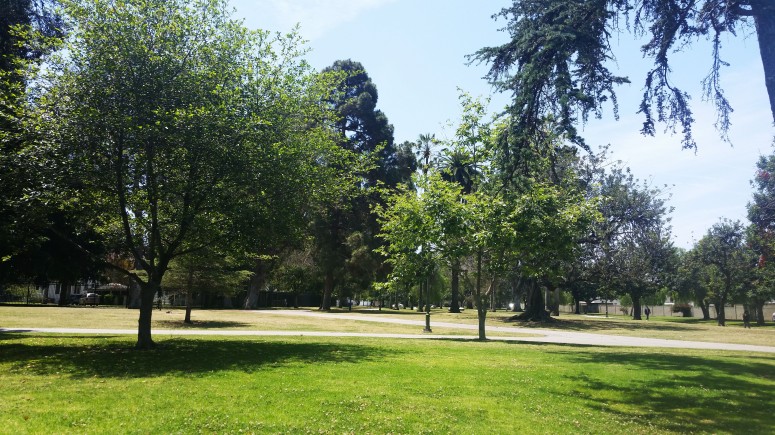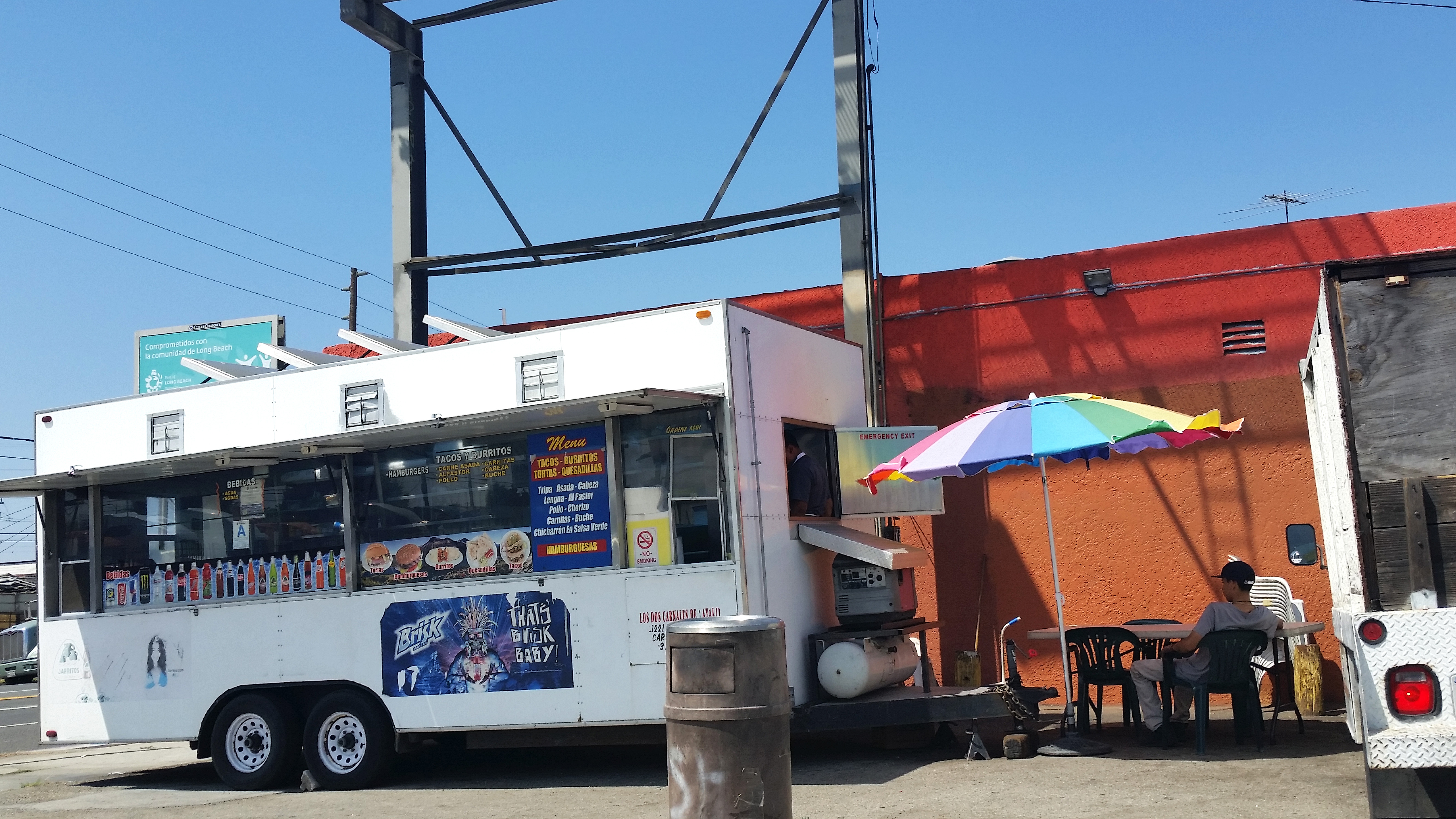
Food truck in Wilmington, Los Angeles, California
The influx of immigrants from Latin America has significantly increased since 1965. Push factors such as limited economic opportunities, authoritarian or corrupt governments, wars, and natural disasters have all played a significant role in why people from the Caribbean, Central America, Mexico, and South America have made the decision to emigrate to the United States. The migration of Latino immigrants to cities like Los Angeles further reinforces the notion of a “Multicultural America.” Where, one can savor a variety of cuisines, dance to different musical rhythms, and hear words and phrases spoken in Spanish and/or other dialects.
The influence of Latino culture is also reflected in the way Latinos utilize space in their communities or as James Rojas would call it the “enacted environment” or “Latino Urbanism.” In his 1991 thesis, The Enacted Environment: The Creation of Place by Mexican and Mexican Americans in East Los Angeles, Rojas discusses the way Latinos—specifically Mexicans and Mexican Americans—made use of spaces like the front yard, sidewalk, and the street in East Los Angeles. He argues that the person is not only the user but also the creator of such spaces. He cites as examples:
- A quinceañera celebration in the front yard,
- Kids playing a hockey or soccer game on the street,
- Mariachis walking on the sidewalks waiting to serenade someone,
- Street vendors on a street corner selling tamales or tacos, and
- Murals painted on blank wall spaces that become a cultural expression.
More than 30 years later, we see these enacted environments taking place in other communities of Los Angeles and across the country. For instance, the first CicLAvia was held in Los Angeles on October 2010 and was inspired by ciclovía events that started forty years ago in Bogota, Colombia. This open streets initiative closes the streets to car traffic and allows Angelenos to walk, bike, and mingle with others. Latino Urbanism is thereby reshaping present-day Los Angeles.
However, there are aspects of it that have generated discussions and debates among Angelenos. Currently communities like Boyle Heights and South Los Angeles seek to legalize street vending, which for many represents a form of stable income for their families while others argue unfair competition and blight. Conversely, in August of 2013, the City of Los Angeles lifted a ten year ban on public murals, a component that has become a cultural icon of communities like Boyle Heights and Pacoima. This makes one wonder: how then do we reconcile the differences that exist between Latino Urbanism practices and enacted local municipal codes?
How has Latino Urbanism reshaped your community? How have local government officials responded to the influence of Latino Urbanism?
Credits: Image #1 by Marisol Maciel-Cervantes; Image #2 linked to source. Data linked to sources.
*This blog was originally posted in January 2016. H/T The Global Grid
